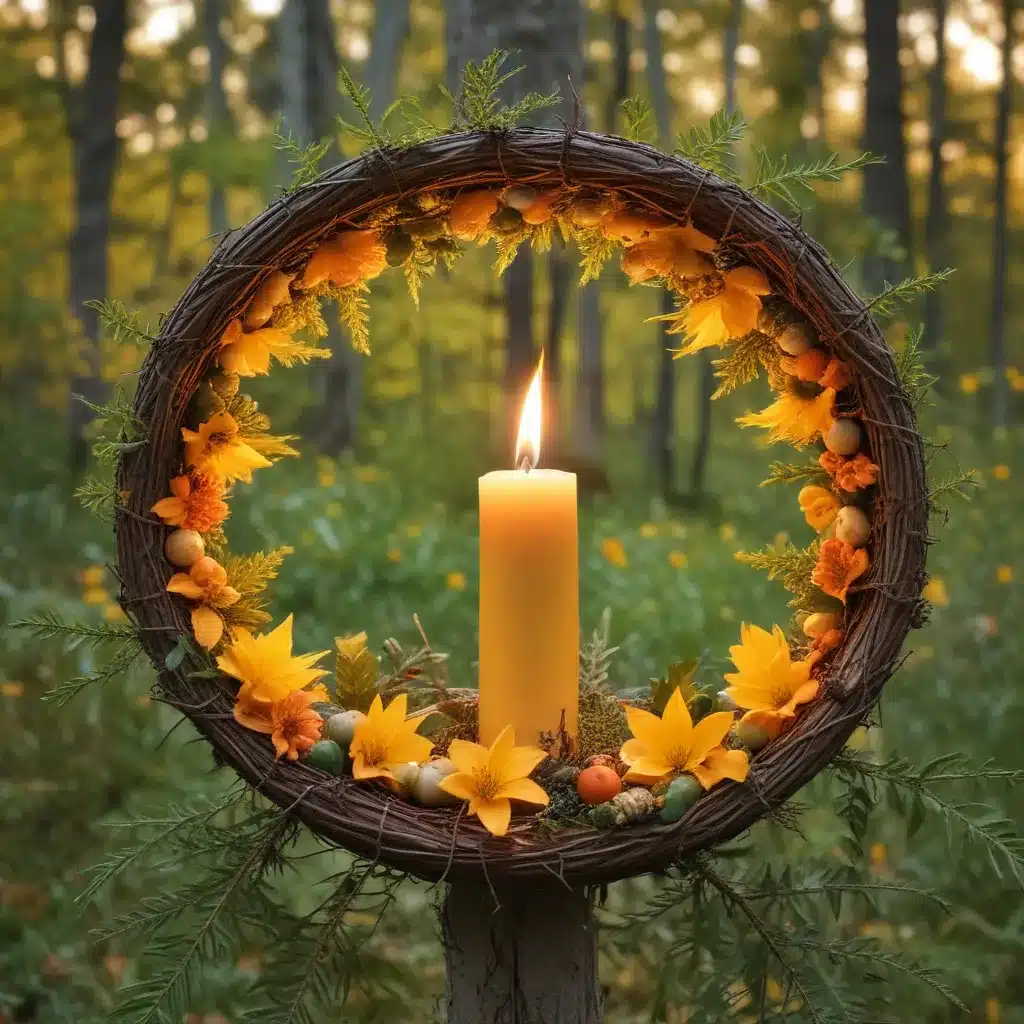
As the days grow shorter and the crisp chill of winter settles in, the arrival of the winter solstice marks a significant turning point in the annual cycle at Crooked Pines Farm. This celestial event, celebrated across cultures for centuries, represents the shift from the longest night to the gradual return of light. For us farmers and nature enthusiasts, the solstice is a time to reflect on the rhythms of the seasons and embrace the transformative power of this transition.
The Significance of the Solstice
The winter solstice, which typically occurs around December 21st in the Northern Hemisphere, is an astronomical phenomenon that marks the moment when the sun reaches its southernmost position in the sky. This event signifies the shortest day and longest night of the year, as the sun’s path across the sky is at its lowest point. Conversely, the summer solstice in June represents the longest day and shortest night, marking the sun’s northernmost position.
These solstice events have long held cultural and spiritual significance for people around the world. Many ancient civilizations, including the Celts, Scandinavians, and Native Americans, observed the solstices as a time of celebration, reflection, and connection to the natural world. Pagan traditions often revolved around honoring the solar deities and welcoming the change of seasons, while diverse faiths have incorporated solstice rituals and observances into their religious practices.
Welcoming the Changing Seasons
At Crooked Pines Farm, the solstice is a time to pause, appreciate, and actively engage with the natural rhythms of the year. As the seasons shift, we witness the subtle yet profound transformations that unfold in our fields, forests, and gardens. The verdant abundance of summer gives way to the dormant, introspective energy of winter, and we find ourselves drawn to sync our own rhythms with those of the land.
During the solstice, we might take a contemplative stroll along our nature trails, observing the bare branches of deciduous trees, the vibrant evergreens, and the tracks of wildlife in the snow. This is a time to reflect on the cyclical nature of growth and rest, and to cultivate a deeper understanding of the interconnectedness of all living things. By aligning ourselves with the seasonal shifts, we can learn to embrace transition and find renewal in the quietude of winter.
Solstice Rituals and Festivities
Across the globe, diverse cultures have developed unique rituals and festivities to celebrate the solstices. While the specific traditions may vary, the underlying themes often revolve around honoring the light, welcoming the change of seasons, and fostering community.
In some Pagan traditions, the winter solstice is observed as Yule, a time to kindle the yule log, decorate with evergreens, and gather with loved ones for feasting and merriment. The burning of the yule log, symbolizing the return of the sun, is a common practice that has been adopted by many faiths and secular celebrations. Likewise, the adornment of homes with evergreen boughs, holly, and mistletoe represents the enduring life force even in the depths of winter.
At Crooked Pines Farm, we host an annual solstice celebration that brings together our community for a night of shared rituals, seasonal delicacies, and family-friendly activities. Guests may gather around a crackling bonfire, share in a simple solstice ceremony, and enjoy a feast of hearty, farm-to-table dishes. Children might create nature-inspired crafts or participate in interactive educational activities that explore the significance of the solstice and the changing seasons.
Symbols and Iconography of the Solstice
The solstice celebrations are rich in symbolic imagery, drawing from the celestial phenomena as well as the natural world. The sun, as the primary celestial body associated with the solstices, is often depicted in various forms, from sun deities to the symbolic use of candles and fire.
Evergreen plants, such as pine, fir, and holly, are ubiquitous in solstice decorations and rituals, as they represent the enduring vitality of nature even in the depths of winter. These evergreen symbols serve as a reminder of the cyclical nature of life, the promise of renewed growth, and the resilience of the natural world.
Additionally, the solstice is often linked to harvest imagery, particularly during the summer celebration when the bounty of the fields is celebrated. Sheaves of wheat, baskets of fruits and vegetables, and other agricultural symbols may feature prominently in solstice festivities, honoring the abundance of the season and the hard work of farmers and gardeners.
The Solstice and Personal Reflection
As we gather to celebrate the solstice at Crooked Pines Farm, we find ourselves drawn to the deeper significance of this celestial event. Beyond the festive traditions and community gatherings, the solstice invites us to engage in personal reflection and align ourselves with the cyclical rhythms of the natural world.
The solstice’s position as a turning point in the year encourages us to pause, take stock, and embrace the transformative nature of time. Just as the seasons shift from one to the next, we too can use this moment to reflect on our own personal growth, letting go of what no longer serves us and welcoming new opportunities for renewal and self-discovery.
By aligning our own rhythms with the changing seasons, we can learn to better navigate the ebbs and flows of life, finding solace in the steadiness of nature’s cycles. The solstice reminds us that even in the darkest of times, the light will return, and that each transition holds the promise of new beginnings.
As the winter solstice approaches, we invite you to join us at Crooked Pines Farm in embracing this profound seasonal shift. Whether through a reflective walk in the woods, a cozy gathering with loved ones, or the creation of nature-inspired crafts, may you find ways to honor the changing seasons and reconnect with the rhythms of the earth. For in doing so, we not only deepen our connection to the natural world, but we also nurture the wellspring of growth and renewal within ourselves.


